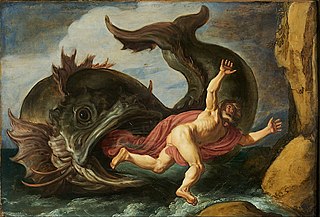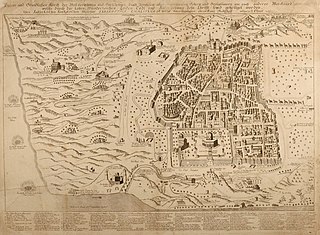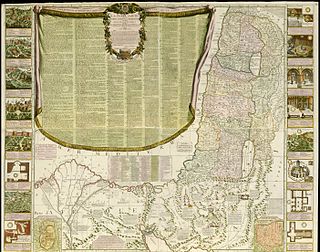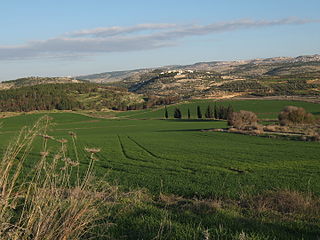
The Book of Jonah is a book of the Nevi'im ("Prophets") in the Hebrew Bible. It tells of a Hebrew prophet named Jonah son of Amittai who is sent by God to prophesy the destruction of Nineveh but tries to escape the divine mission. Set in the reign of Jeroboam II (786–746 BC), it was probably written in the post-exilic period, some time between the late 5th to early 4th century BC. The story has a long interpretive history and has become well known through popular children's stories. In Judaism, it is the Haftarah portion read during the afternoon of Yom Kippur to instill reflection on God's willingness to forgive those who repent; it remains a popular story among Christians. It is also retold in the Quran.

Jonah or Jonas is the name given in the Hebrew Bible to a prophet of the northern kingdom of Israel in about the 8th century BCE. He is the eponymous central figure of the Book of Jonah, in which he is called upon by God to travel to Nineveh and warn its residents of impending divine wrath. Instead, Jonah boards a ship to Tarshish. Caught in a storm, he orders the ship's crew to cast him overboard, whereupon he is swallowed by a giant fish. Three days later, after Jonah agrees to go to Nineveh, the fish vomits him out onto the shore. Jonah successfully convinces the entire city of Nineveh to repent, but waits outside the city in expectation of its destruction. God shields Jonah from the sun with a plant, but later sends a worm to cause it to wither. When Jonah complains of the bitter heat, God rebukes him.
According to the Hebrew Bible, the Tribe of Reuben was one of the twelve tribes of Israel. Unlike the majority of the tribes, the land of Reuben, along with that of Gad and half of Manasseh, was on the eastern side of the Jordan. According to the biblical narrative, the Tribe of Reuben descended from Reuben, the oldest son of the patriarch Jacob. Reuben, along with nine other tribes, is reckoned by the Bible as part of the northern kingdom of Israel, and disappears from history with the demise of that kingdom in c. 723 BC.

According to the Hebrew Bible, the Tribe of Judah was one of the twelve Tribes of Israel.
According to the Hebrew Bible, the Tribe of Manasseh was one of the Tribes of Israel. It is one of the ten lost tribes. Together with the Tribe of Ephraim, Manasseh also formed the House of Joseph.

According to the Torah, the Tribe of Benjamin was one of the Twelve Tribes of Israel. The tribe was descended from Benjamin, the youngest son of the patriarch Jacob and his wife Rachel. In the Samaritan Pentateuch the name appears as Binyamīm.
According to the Hebrew Bible, the Tribe of Issachar was one of the twelve tribes of Israel. It is one of the ten lost tribes. In Jewish tradition, the tribe of Issachar was seen as being dominated by religious scholars and influential in proselytism.
According to the Hebrew Bible, the Tribe of Gad was one of the Twelve Tribes of Israel who, after the Exodus from Egypt, settled on the eastern side of the Jordan River. It is one of the ten lost tribes.

Lucas van Leyden, also named either Lucas Hugensz or Lucas Jacobsz, was a Dutch painter and printmaker in engraving and woodcut. Lucas van Leyden was among the first Dutch exponents of genre painting and was a very accomplished engraver.

The Sistine Chapel ceiling, painted by Michelangelo between 1508 and 1512, is a cornerstone work of High Renaissance art. The ceiling is that of the Sistine Chapel, the large papal chapel built within the Vatican between 1477 and 1480 by Pope Sixtus IV, for whom the chapel is named. It was painted at the commission of Pope Julius II. The chapel is the location for papal conclaves and many other important services.

The Sistine Chapel ceiling, painted by Michelangelo between 1508 and 1512, is one of the most renowned artworks of the High Renaissance. Central to the ceiling decoration are nine scenes from the Book of Genesis of which The Creation of Adam is the best known, the hands of God and Adam being reproduced in countless imitations. The complex design includes several sets of individual figures, both clothed and nude, which allowed Michelangelo to fully demonstrate his skill in creating a huge variety of poses for the human figure, and have provided an enormously influential pattern book of models for other artists ever since.

Hapoel Hadera–Giv'at Olga "Shulem Schwarz" F.C. is an Israeli football club from Hadera. They currently play in the Israeli Premier League, and have previously spent eight seasons in the top division.

Paradise and Hell is the left and right panels of a minor diptych by a follower of Hieronymus Bosch based on The Haywain Triptych. The image is oil on panel and is 135 x 45 cm. It was painted c. 1510 and is now in the Museo del Prado, Madrid. Paradise is depicted darker than in the Haywain, which possibly represents the darkness of original sin.

Young Hare is a 1502 watercolour and bodycolour painting by German artist Albrecht Dürer. Painted in 1502 in his workshop; it is acknowledged as a masterpiece of observational art alongside his Great Piece of Turf from the following year. The subject is rendered with almost photographic accuracy, and although the piece is normally given the title Young Hare, the portrait is sufficiently detailed for the hare to be identified as a mature specimen — the German title translates as "Field Hare" and the work is often referred to in English as the Hare or Wild Hare.

Bartholomeus Willemsz Dolendo a Dutch engraver, draftsman and goldsmith. He is presumed to have been instructed in engraving by Hendrik Goltzius. He worked entirely with the graver, in an open, clear style. There are by him several plates, some of which are from his own designs. He occasionally marked his prints with his name, but more frequently with a ciphers.

De-Pierre Map is an ancient map of the city of Jerusalem which was drawn by the Austrian pilgrim De Pierre in 1728.

Nolin Map is an historic map of the Land of Israel and the city of Jerusalem which was drawn by the French cartographer and geographer Jean Baptist Nolin in 1700.

The Bünting Clover Leaf Map, also known as The World in a Cloverleaf, is an historic mappa mundi drawn by the German Protestant pastor, theologist, and cartographer Heinrich Bünting. The map was published in his book Itinerarium Sacrae Scripturae in 1581.

Israel Land Development Company (ILDC) is one of Israel's largest conglomerates, with fields including real estate, construction, energy and hotels. It was acquired in 1987 by Yaakov Nimrodi.

Jonah 1 is the first chapter of the Book of Jonah in the Hebrew Bible or the Old Testament of the Christian Bible. This book contains the prophecies spoken by the prophet Jonah, and is a part of the Book of the Twelve Minor Prophets.




























